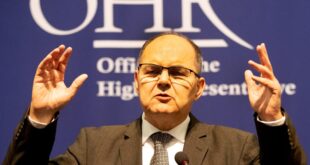The re-election of pro-Western liberal Boris Tadic as president of Serbia on Sunday is expected to soothe investor concerns about the country’s stability ahead of the imminent declaration of independence by its Kosovo province.Here are key facts about the Serbian economy.
* The economy grew by an estimated 7.5 percent in 2007, after posting growth of 5.7 percent in 2006 and 6.2 percent in 2005. But foreign investments fell by more than 30 percent last year on worries of political instability.
* Serbia has sold some state monopolies since 2000, when the fall of autocrat Slobodan Milosevic marked the opening up of the economy, but must still privatize many mid-size companies as well as some large state firms such as the telecom monopoly, car maker Zastava, and JAT Airways.
* The country hopes to attract at least $6 billion a year from sell-offs and foreign investment until 2010.
* Standard & Poor’s revised Serbia’s outlook to stable from positive in November due to fiscal policy loosening, but affirmed its “BB-” long term and “B” short term foreign and local currency sovereign credit ratings.
* Fitch kept its rating at BB- with stable outlook in November but noted that political risk “remains a material constraint on Serbia’s sovereign rating.”
* Serbia’s dinar currency currently trades at 82.6 to the Euro after a three-year high of 76.8/euro last October.
* Average salaries are around 370 euros a month, with unemployment at 30 percent. The cost of living rose by seven percent in 2007.
 Eurasia Press & News
Eurasia Press & News

